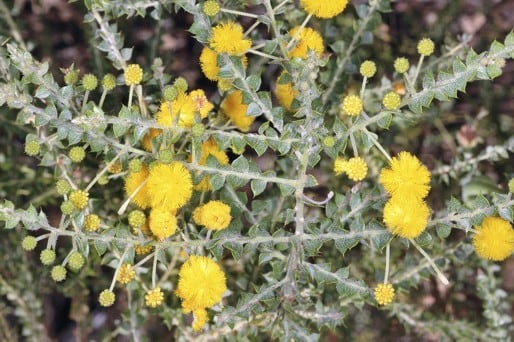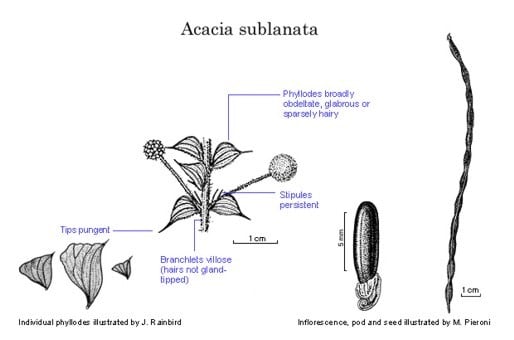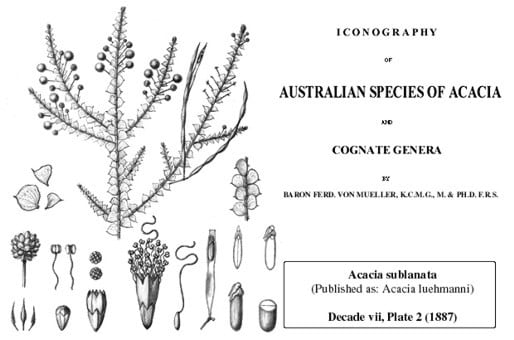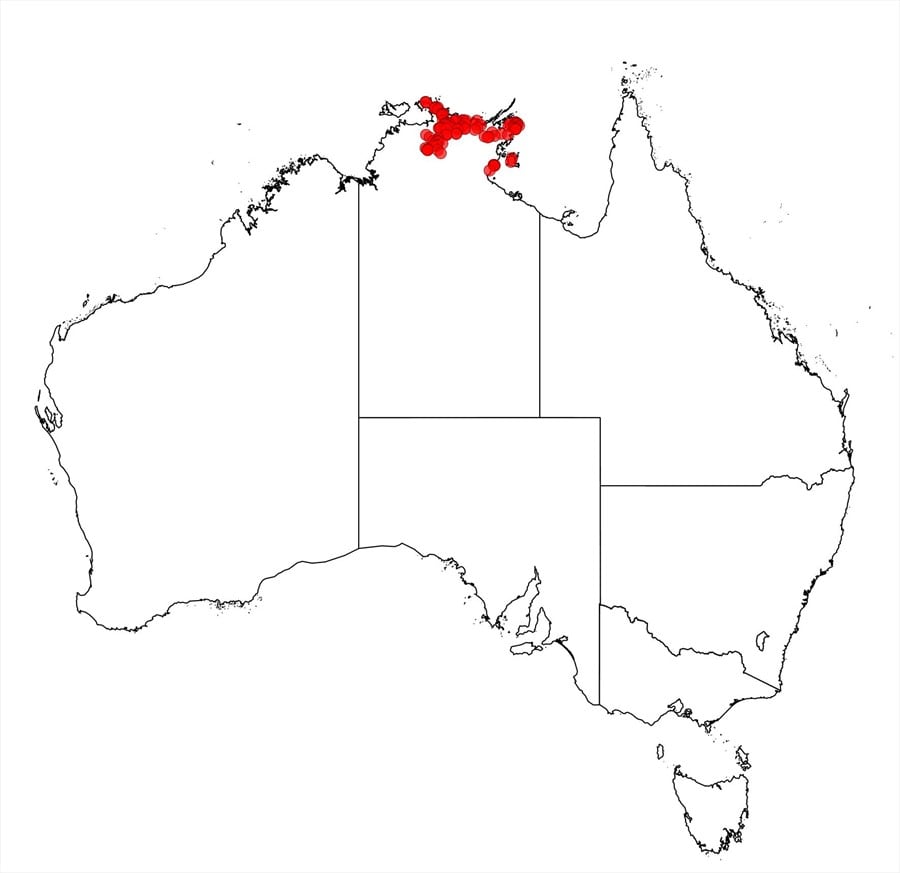Acacia sublanata Benth.
WATTLE
Acacias of Australia
Family
Fabaceae
Distribution
Occurs from upper South Alligator R. and East Alligator R., E to Gove Peninsula and Groote Eylandt, N.T.
Description
Erect to semi-prostrate shrub 0.4–3 m high. Branchlets striate, tomentose-villous. Stipules persistent, free, linear-lanceolate, arcuate. Phyllodes sessile, patent, inequilaterally broadly obdeltate, straight, 4–15 (–18) mm long, 2–12 mm wide, acute to acuminate with straight or recurved tip, mucronate, pungent, firmly chartaceous to thinly coriaceous, glabrous or sparingly tomentose-villous, glabrescent, with 2–4 distant raised nerves; marginal nerves prominent, yellow. Inflorescences simple; peduncles 6–20 mm long, ±tomentose-villous, often with ±median bract; heads globular to occasionally obloid, 5–6 mm diam., to 8 mm long, 30-flowered, golden, scented; bracteoles not exserted. Flowers 5-merous; sepals united into a 5-lobed calyx. Pods linear, raised over and ±constricted between seeds, straight, to 14 cm long, 3–6 mm wide, crustaceous, sparsely to moderately crispate-puberulous. Seeds longitudinal, ±oblong, 5–7.5 mm long, glossy, brown-black; aril terminal.
Habitat
Usually grows in woodland on sandstone.
Specimens
N.T.: Murganella, D.Bowman 302 & B.Wilson (DNA); 8 km SW of B.H.P. camp airstrip, J.R.Maconochie 1489 (BRI, DNA, NSW, PERTH); 11.3 km E of Rum Bottle Ck, J.R.Maconochie 1592 (BRI, DNA, PERTH); Yirrkala, R.L.Specht 668 (BRI, PERTH).
Notes
A member of the ‘A. deltoidea’ group. Nearest to A. adenogonia which has partly united stipules, ovate to lanceolate phyllodes with the gland usually projecting beyond the phyllode margin, exserted bracteoles, quite different calyx and closed seed-pleurogram. Also related to A. froggattii. Superficially reminiscent of A. arafurica which has spicate inflorescences and pulvinate phyllodes, among numerous other differences.
As noted by A.B.Court, Muelleria 2: 159 (1972), Bentham incorrectly synonymised A. pravifolia under A. sublanata, thereby causing confusion for more than a century about the correct application of the name.
Several N.T. collections (e.g. Gove, R.Hinz 8223, DNA, and c. 16 km S of Oenpelli Mission, L.G.Adams & C.R.Dunlop 2974, DNA, have distinctly obloid flower-heads, but are otherwise typical of the species. There is also very considerable variation in size and form of the phyllodes but with no obvious disjunctions.
FOA Reference
Data derived from Flora of Australia Volumes 11A (2001), 11B (2001) and 12 (1998), products of ABRS, ©Commonwealth of Australia
Author
R.S.Cowan
Minor edits by B.R.Maslin & J.Reid
This identification key and fact sheets are available as a mobile application:
URL: https://apps.lucidcentral.org/wattle/
© Copyright 2018. All rights reserved.










